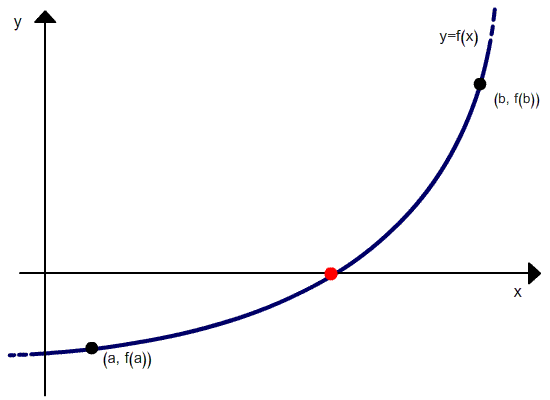Developed by Vinayak Singoriya & Utkarsh Gubrelay
Under Guidance of Dr. Shaligram Prajapat
Copyright © 2021 All rights reserved. ..
Under Guidance of Dr. Shaligram Prajapat
Copyright © 2021 All rights reserved. ..
Regula Falsi Method: The convergce process in the bisection method is very slow. It depends only on the choice of end points of the interval [a,b]. The function f(x) does not have any role in finding the point c (which is just the mid-point of a and b). It is used only to decide the next smaller interval [a,c] or [c,b]. A better approximation to c can be obtained by taking the straight line L joining the points (a,f(a)) and (b,f(b)) intersecting the x-axis. To obtain the value of m we can equate the two expressions of the slope m of the line L.
Algorithm :
For any continuous function f(x),

| S.No | A | B | m | f(m) | f(m)*f(a) |
|---|